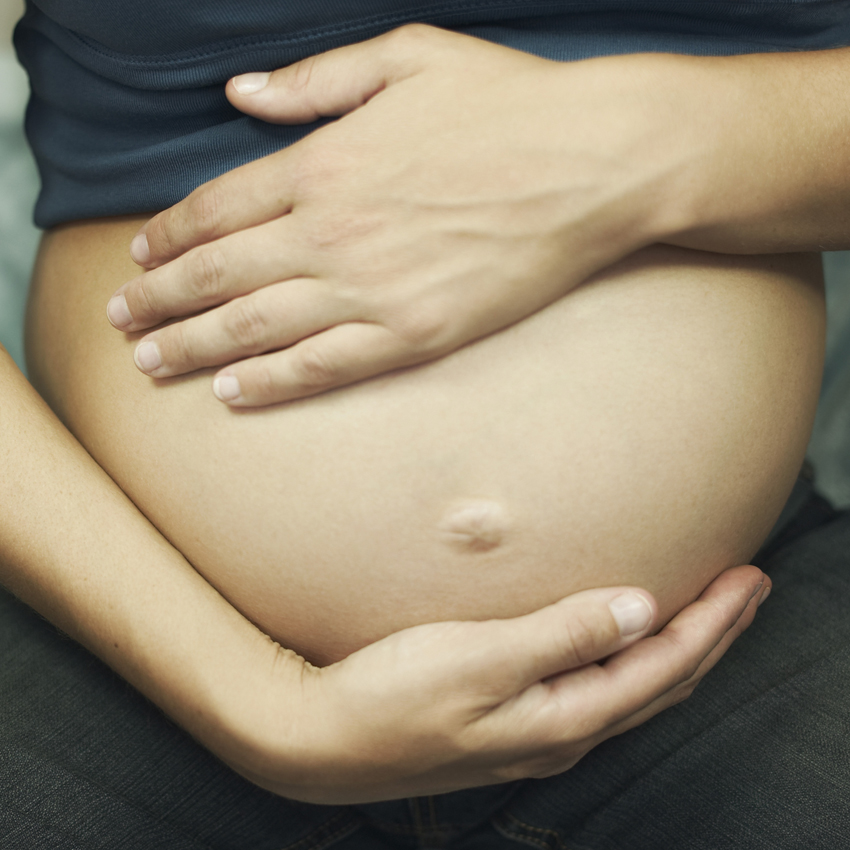Multiple Choice: The Consequences of FSH/IUI Fertility Treatments

Photo via Thinkstock
Last fall, my husband and I breezed into an early-morning appointment at our doctor’s office, in western Massachusetts. I’d recently taken several home pregnancy tests, all of which had turned out positive, so we arrived feeling triumphant and giddy. Soon, we’d be able to see our much-anticipated little nipper on a sonogram. Take that, infertility!
A short while later, I was flat on my back, straining to see the computer as a technician maneuvered the ultrasound wand. But she didn’t turn the screen toward us. Instead, she took my hand and said, “I see more than one.” Long pause. “I see more than two.” An even longer pause. “I see more than three.” Finally, she tilted the monitor toward us. Our favorite nurse, who had been uncharacteristically quiet, put her head in her hands and nearly burst into tears before walking out into the hall.
After a few minutes, she returned with the Envelope. Gently, she told us that it contained an overview of “selective reduction,” an option for parents of way more babies than expected that eliminates some of the fetuses. She explained that the fertility treatment we’d used—something called FSH/IUI, which involves injecting sperm into a woman’s uterus after she takes a regimen of hormones—had put us at risk for multiples (a fact we’d been unaware of). The nurse then recommended that we take our time before opening the Envelope.
We never did.
Some things about infertility are pretty hilarious. Appointments can be filled with sublimely ridiculous moments, like when a lab tech hands you a test tube filled with your husband’s sperm and says, in all seriousness, “Better put it in your bra while you wait for the insemination, dear. It’s better for the baby not to get cold.” Other procedures just beg for levity. During a blood test, a nurse noticed me going pale and said, “Aw, it’s just a little prick. Turn your head, close your eyes, and it’ll be over soon.” To which my husband couldn’t resist interjecting: “It’s our wedding night all over again!”
But there wasn’t much funny about the Envelope—or the alternative, for that matter. Picturing my 5-foot-3, 95-pound frame cartoonishly bulging with a quartet of babies had me worried about my own health. But the world also seemed to have an infinite number of calamities in store for these fetuses, no matter what decision we made. Trying to give birth to all of them would put them at risk for lifelong complications, because they would inevitably be born prematurely. Even imagining what it might be like to “eat for five” failed to lift the gloom. The conversation on the ride home from the doctor’s office that day was barren. “Four,” my husband said. “Four,” I repeated. “Impossible,” he said. “Impossible.”
“But did you see their hearts beating?”
“Yeah.”
After being handed the Envelope, I realized that I wasn’t the first person to have been unnerved by the unexpected results of an FSH/IUI treatment. The mommy blogosphere is teeming with moms admitting—no, loudly proclaiming—that juggling twins (or more) had never been part of their plans. Mark Twain said it best: “Sufficient unto the day is one baby. As long as you are in your right mind, don’t you ever pray for twins. Twins amount to a permanent riot. And there ain’t any real difference between triplets and an insurrection.”
Just how many couples enter the world of FSH/IUI (which stands for follicle-stimulating hormone/intrauterine insemination) and end up staring at Envelopes is impossible to say. And that, as I found out, is because nobody is recording the treatment’s rates and outcomes. Massachusetts, like all states, isn’t required to report incidences of the procedure, the way it must with in vitro fertilization (IVF). Anecdotally, physicians nationwide report that FSH/IUI is often mandated by cost-conscious insurance companies as the step women must take before the more-expensive IVF. It’s also widely understood—and I found this out the hard way—that the procedure makes it incredibly difficult to control how many fetuses you’ll end up with, whereas women undergoing IVF know exactly how many embryos are transferred during each procedure. My doctors told me that it was highly unusual to have wound up in my quadruplet situation, but they acknowledged that the process is as much an art as a science.


